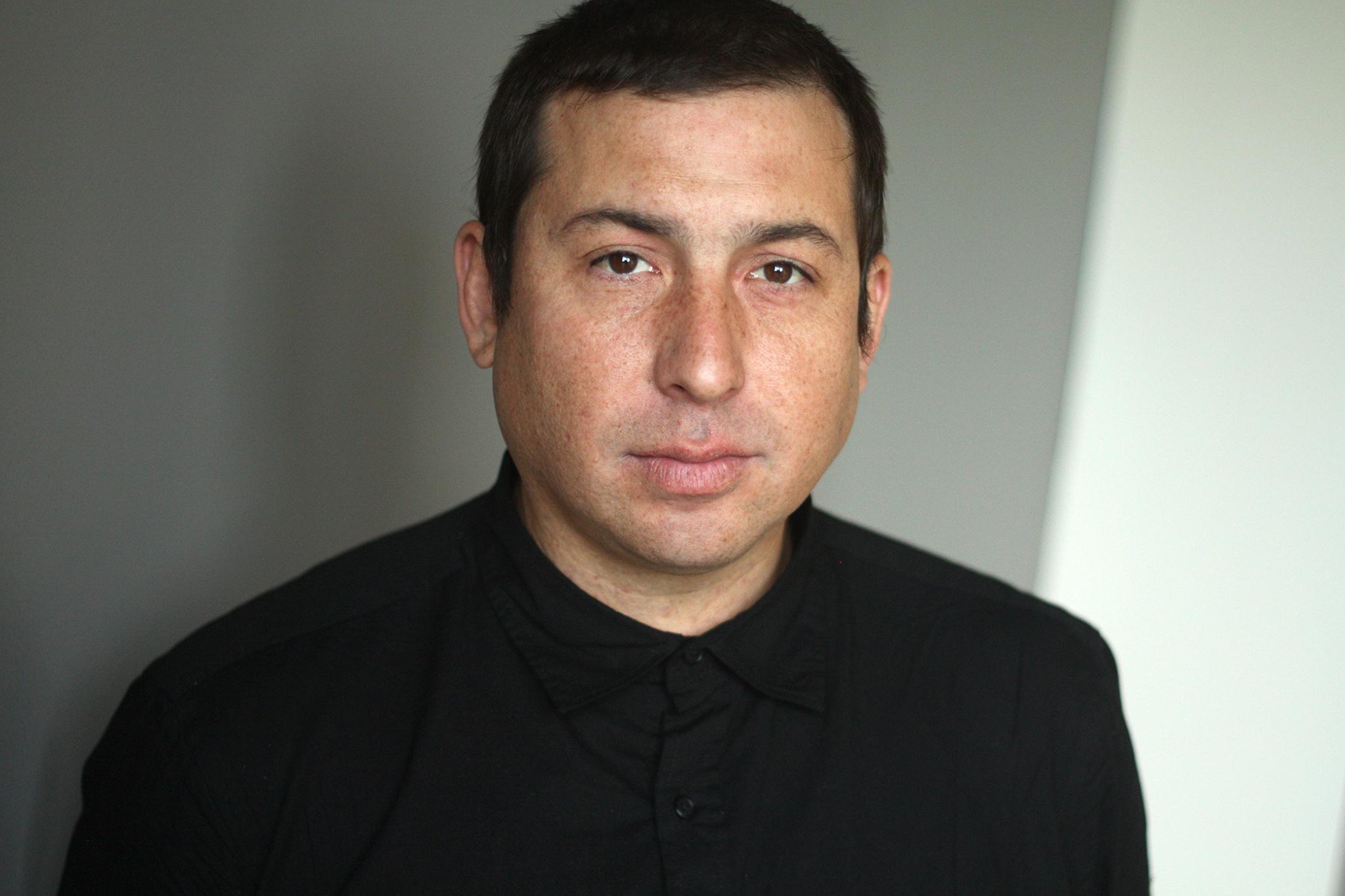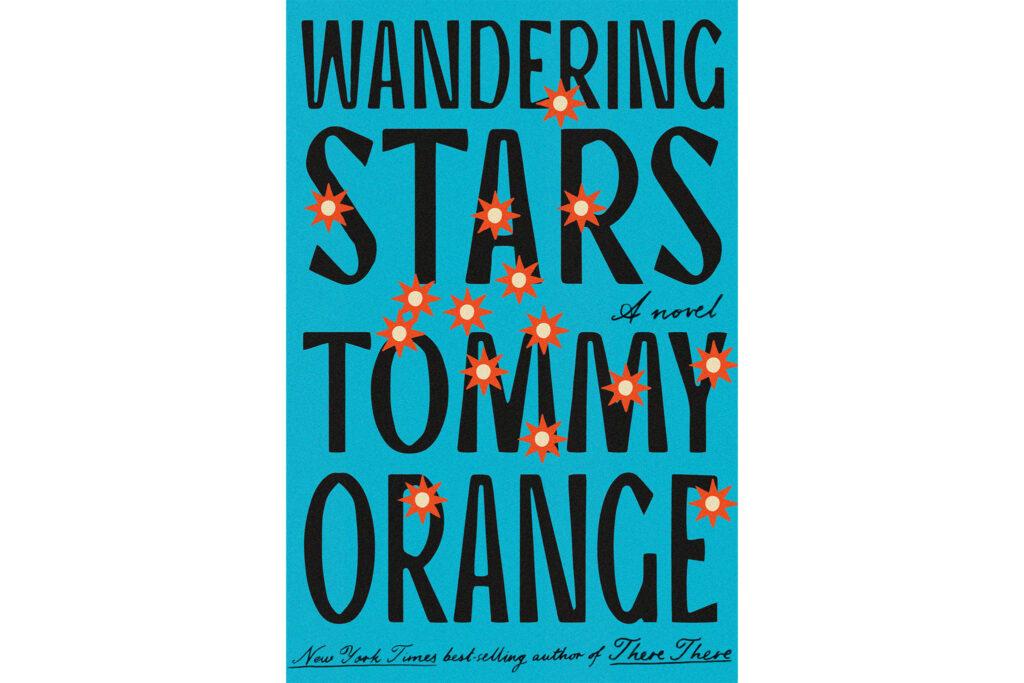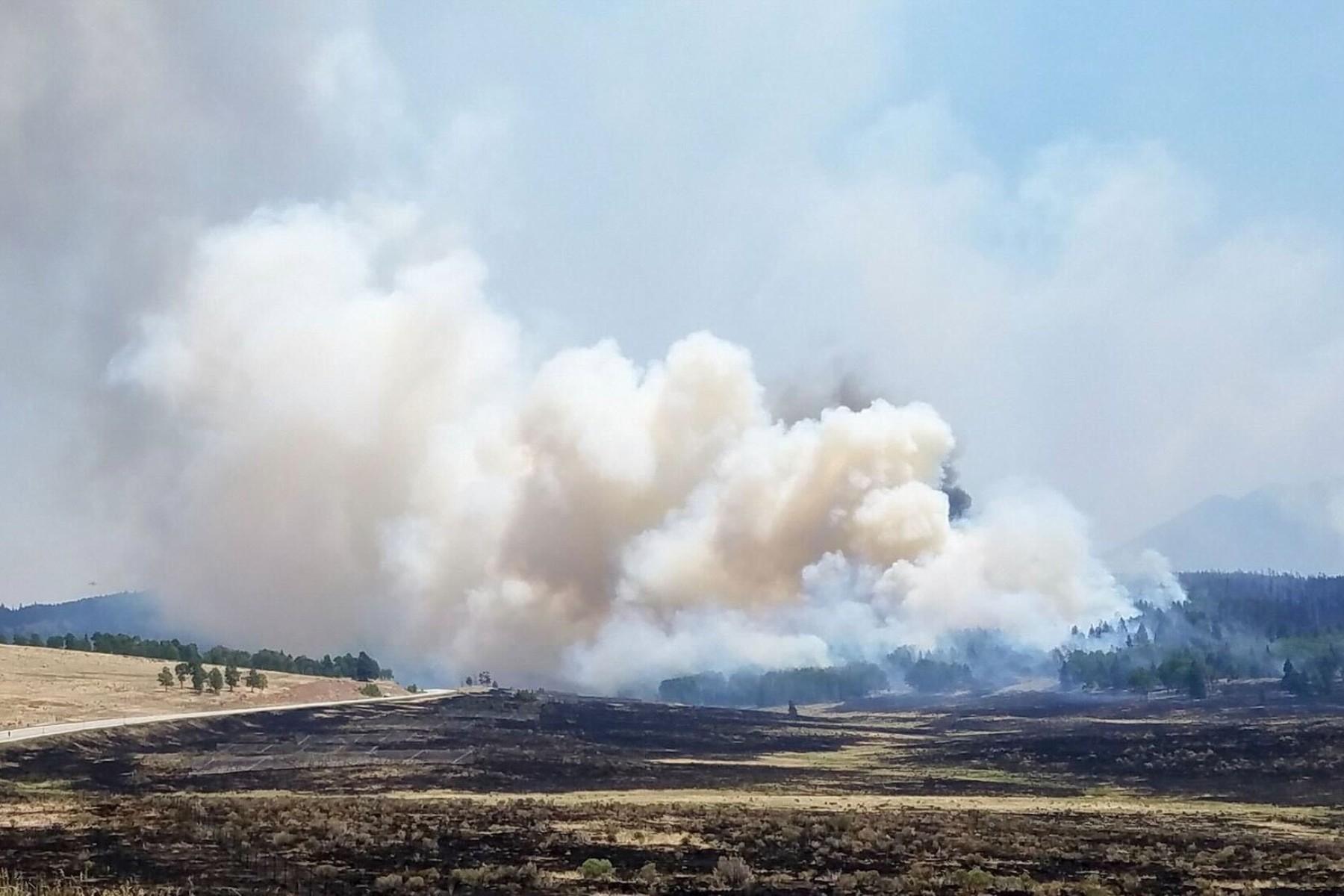
Colorado’s deadliest day was November 29, 1864 when more than 200 Cheyenne and Arapaho people who had been trying to make peace with white settlers were murdered by U.S. troops in a surprise attack. The assault is known as the Sand Creek Massacre and it opens the latest book by Tommy Orange.
“Wandering Stars” begins with a young boy who escaped the massacre and follows the next five generations of his descendants. Released in March, the book uses historical events, compelling characters, sly humor and realistic dialogue to show how one of the worst days in Colorado wasn’t an isolated incident; Its effects are still felt today.
“This country was taken in an armed robbery, essentially,” Orange told CPR’s Colorado Matters. While he hesitates to say that a work of fiction can bring about real-world change, he hopes he’s raising awareness of the past.
“I think as a country we still don't really acknowledge the nature of what this country did to become a country — the dislocation, relocation, and murdering of Indigenous people,” he said. “I think if enough people see it, there's hope that something will happen.”
“Wandering Stars” is a continuation of Orange’s focus on Indigenous people living in urban areas. The second part of the book centers on the contemporary lives of the family members in Oakland, CA.

Other generations of the fictional group participate in true events like the imprisonment of Indigenous people in Florida; the original Indian boarding school in Carlisle, Pennsylvania; and the occupation of Alcatraz.
In some ways the book is both a prequel and a sequel to his bestselling first novel, “There There,” which was a finalist in the Pulitzer Prize fiction category in 2019 and won numerous other awards. “Wandering Stars” resolves some of the cliffhangers Orange left the first time around.
Orange spoke with Colorado Matters Producer Rachel Estabrook about the book, how he got into writing and why he connects contemporary problems like addiction and mass shootings to America’s founding.
This interview transcript has been edited for length and clarity.
Rachel Estabrook: Why did you want to write a fictional account of the descendants of people who survived the Sand Creek Massacre?
Tommy Orange: I grew up hearing my dad tell this story about a young man [who fled] the massacre, and he saves a baby, and that essentially is where my dad's Cheyenne name came from.
I was also already writing about this other piece of history, which is the origin of the boarding schools: a prison castle in St. Augustine, Florida. There were people that escaped the Sand Creek Massacre and could have ended up at that prison castle, because they rounded up a lot of mostly young men. There were 71 prisoners and half of them were Southern Cheyennes and [they] brought them all the way to Florida from Oklahoma.
I wanted to try to find a way to get this family story in, and also have it parallel what happens in the second part of the book where another young man is sort of fleeing a shooting.
Estabrook: What was that prison about and who was in charge of it?
Orange: Richard Henry Pratt, who people may know if they know about Indian boarding schools, was the founder of the Carlisle Indian Industrial School, and that's probably one of the most well-known Indian boarding schools. It was really foundational because a lot of schools came from that idea, and the motto that he had was “kill the Indian, save the man.”
He got the idea for the school first at this prison castle where he was put in charge of 71 prisoners of war, and he had the idea to Christianize them, militarize them, and teach them English. He thought these three years with the prisoners of war were very effective in civilizing them, or however he thought of it, and then extended that to children, which is kind of a cruel leap in logic to go from prisoners of war to forcing children into these schools.
Estabrook: You wrap so many historical truths into the narrative. At the same time, one of the themes in your work is how Indigenous people don't always get to know their own history, because it's been suppressed by white people. How did you come to know about your own history?
Orange: I grew up with my dad, who was very well known. He's a fluent speaker in Cheyenne, and we would go to Oklahoma to see family. And then I ended up working in the Native community in Oakland for almost a decade. So unlike my characters, I didn't have that same sort of dislocation or having to reconnect.
Estabrook: The legacy of boarding schools is a very contemporary issue. Over a hundred years after most of these schools shut down, the U.S. and Colorado are acknowledging what happened, and trying to figure out what reconciliation could look like. To what extent do you see your books contributing to that dialogue?
Orange: I sometimes hesitate to think that works of fiction can do real world things, but my books do now have a lot of visibility, and I was brought in by the Sand Creek Massacre Foundation and became aware of a lot of these new efforts toward some sense of justice or reckoning.
So I do hope the visibility of me talking about these events has real world effects, not just readers connecting and engaging with the work, but also that it moves people to do things, to look at some of these histories that we tend to look away from.
Estabrook: Have you thought about what you think would be the right response or attempt at reconciliation when it comes to boarding schools and the legacy today?
Orange: I think as a country we still don't really acknowledge the nature of what this country did to become a country — the dislocation, relocation, and murdering of Indigenous people who are here. So it's very hard for me to believe that there would be action, and I don't know what that would look like.
I would hope that telling the stories, reading the stories and finding out about the history would hopefully lead to something. And I think it's powerful to acknowledge the truth of history and I think things can start to happen once you look at it. So my hope is just that people start paying attention to it and I think if enough people see it, there's hope that something will happen.
Estabrook: That’s interesting because I think fiction is part of how people learn about and reflect on and find meaning in society.
Orange: I mean, sometimes I just don't want to be naïve and think that, but I do believe it. That's why I do it. I put a lot of time and effort into these two books. They were 12 years of my life. So obviously I do believe it somewhere in me.
Estabrook: Was there something that got you thinking deeply about this idea of ancestry, survival and the generations that had to come before us in order for us to be born?
Orange: I think when I found out I was going to be a father in 2010. In 2011, I was starting to do digital storytelling work, and I was thinking about what I was going to pass on to my son, and what has been passed on to me. It did something to me to find out I was going to be a father and made me look at how I was raised and what I know about my heritage.
I ended up doing some stories. I made several stories that started to look at the Sand Creek Massacre and how things get carried on and passed down. So that was kind of a pivotal moment in my life becoming a father.
But then I did years of this storytelling work that [influenced] the book that I ended up writing, as well.
Estabrook: A theme of the seven generations of the family at the center of this book is substance use and addiction. What did you want other people from Indigenous backgrounds to think about when it comes to substance use and addiction through this book?
Orange: I think with novels, these lives are a bit messy. Addiction is messy. I definitely wanted to infuse the story of how somebody can become addicted, which is a very common story. I wanted to tell the story of this family and what that can look like, and how they can try to heal from it, as well.
Addiction is something that's affected my life in mostly negative ways, so I think I was compelled to write about it. Addiction still has a stigma and I think people who suffer from it or have family members who suffer from it are more understanding when you have direct experience.
And it is something that affects Native communities — it affects a lot of American communities: We're still in an opioid crisis, and the book follows somebody who experiences a mass shooting event. We hear about these shootings and we usually get a number and we probably hear more about the shooter, and then we move on. We don't follow what that's like for somebody to try to recover from experiencing a mass shooting event.
So I also wanted to follow this single family, this one character, in figuring out how to make sense of all that.
Estabrook: Do you see the experiences of the mass shooting and the addiction as related in modern society and as told through your character?
Orange: It's hard not to look at the mass shooting problem and the origins of this country. This country was taken in an armed robbery, essentially. There were a lot of guns. And the fact of this country being taken from people — it’s not the way we frame the story when we talk about American history.
I think when we see these mass shooting events and our weird obsession with guns, all of these things are connected. I think as Americans, we have a lot we need to look at about who we are that we often refuse to. We're a nation of people who are addicted to a lot of different things. It's not always drugs, but it's stuff that's distracting and allows us to not have to look at a lot of problems we probably should be facing.
Estabrook: There are so many aspects of present day life that you get into. There's a dialogue where a man takes a DNA test and finds out he’s statistically one-eighth Native American, then relates this to his son. At one point the man says, “I feel chief energy,” which made me laugh in the context of the book. But it also feels like it could be taken from the headlines, for example with Elizabeth Warren’s claims of American Indian ancestry. Was this a real-life conversation?
Orange: Not at all. This is completely fictional. Unfortunately there’s a lot of that happening, still, and not a lot of people held to consequences around this ethnic fraud, otherwise known as the “Pretendian problem.”
I write about it in “There There” when one of the characters who learns how to dance powwow from YouTube, worries about being a Pretendian because he doesn't necessarily feel as connected as he wants to feel to his native heritage.
Estabrook: In releasing your first book, and now on tour for your new book, have you heard from people who have learned about their own history through reading your work?
Orange: Not specifically. There are a lot of young Native people that I've met that really connect to my work and feel seen for the first time in a book, and that makes them happy. It also makes me happy when they share that with me. But I wouldn't say that they're actually learning about their history from either of my books
Estabrook: I’m going to bring it back here to Colorado. The Sand Creek Massacre forced Cheyenne and Arapaho people off of Colorado's Front Range, essentially, in the 1860s. Do you want to see the tribes have a formal presence on the Front Range again?
Orange: I don't know what that would look like exactly, because, for example, my tribe’s home is in Oklahoma now. I think there's a lot of work that can be done, collaborating with the tribes, to educate Colorado citizens and to have a visible memorial. For example, I think people in Colorado, for a long time, called it a battle, as in “the Battle at Sand Creek.” The attack by 700 men at dawn killing mostly women, children, and elders was not a battle. John Chivington, who led the attack, was able to retire in peace. He never went to trial. So I think educating people about it is important in telling the story of this country.
Estabrook: I want to ask about your biography. I've heard you say that you didn't read growing up, but then you worked in a bookstore and got the idea to write.
Orange: That's true. Mostly I played sports as a young person, including competitive roller hockey. Then I became a musician and my undergraduate degree was in sound engineering. After college, I didn't get a job in the sound engineering field, and I saw an ad in the paper at a used bookstore, and I think the bookstore owner hired me because she thought I could move a lot of books, because she was trying to consolidate two warehouses of books into one.
That was where I stumbled into it. I hadn't really understood or appreciated what fiction was at all until that moment.
I started reading seriously in 2005 and was trying to write soon after that, but just toiling away in private. For the first eight years, I was just teaching myself. And then I got into a masters in fine arts program in 2014 and ended up selling “There There,” which was my thesis for my MFA. There were a lot of ups and downs, a lot of rejections and submitting places.
Estabrook: Do you feel like you've developed a mission for your work as an author? And at what point along your journey did that come together, did that crystallize for you?
Orange: Yeah, I definitely think there were stories that I wanted to tell about being an urban Native person, and these historical pieces that I think are really important to think about as Americans and as Native people.
But I sold my third book at the end of last year, and it's not historical. It's a contemporary piece, which takes place in Oakland. The tone is a little bit more humorous. I recently also finished a screenplay for a feature film, and that's an original screenplay that's not related to those things.
Estabrook: When you got the idea to write, did you feel like something was missing from literature? Was there a gap you wanted to fill? Or have you just decided what you wanted to write about because it's what you know?
Orange: When I first was trying to develop a voice, I was writing a lot of experimental stuff, and a lot of that stuff was not conventional story structure; [It was] very stream of consciousness, probably unreadable. I'm glad I don't have any record of it. And then as soon as I started writing from my own point of view and including aspects of my own life and being biracial, having a Native father and a white mother, and what that experience is like, this whole world felt like it opened up of things to write about.
Having all this experience working in the Native community in Oakland was definitely also an inspiration as to what to write about. So it is partly writing what I know and through the lens of who I am, but there was also this huge gap and continues to be about urban Native stories. We've been living in cities for more than a decade — 80 percent of us live in cities — and there are not that many stories about what that experience is like, so I think I still am writing into that absence.









